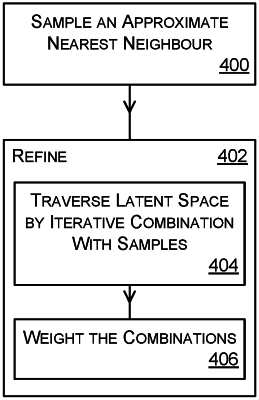| CPC G06N 3/088 (2013.01) [G06F 18/2135 (2023.01); G06F 18/22 (2023.01); G06T 15/005 (2013.01); G06V 10/82 (2022.01); G06V 40/171 (2022.01)] | 20 Claims |

|
1. An image processing apparatus comprising:
a memory storing a region of interest of a synthetic image depicting an object from a class of objects;
a trained neural image generator having been trained to map embeddings from a multi-dimensional latent space to photorealistic images of objects in the class; and
a processor arranged to:
compute a first embedding from the latent space, the first embedding being computed by selecting an initial point embedding in the latent space which generates an image similar to the region of interest and by iteratively combining the initial point embedding with other samples from the latent space to produce the first embedding;
compute a second embedding from the latent space, the second embedding corresponding to the synthetic image; and
blend the first embedding and the second embedding to form a blended embedding,
wherein the trained neural image generator further generates an output image from the blended embedding.
|